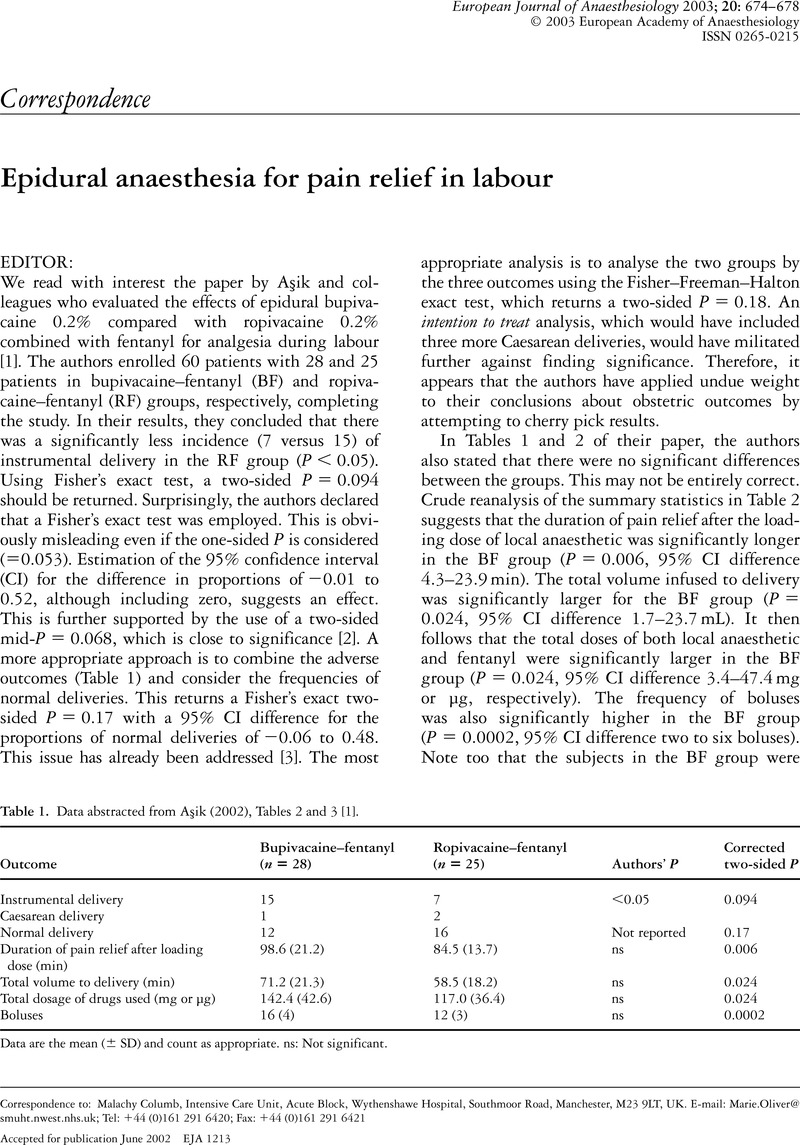No CrossRef data available.
Article contents
A reply
Published online by Cambridge University Press: 12 July 2005
Abstract
An abstract is not available for this content so a preview has been provided. Please use the Get access link above for information on how to access this content.

- Type
- Correspondence
- Information
- Copyright
- 2003 European Society of Anaesthesiology
References
Aşık İ, Göktuğ A, Gülay I, Alkış N, Uysalel A. Comparison of bupivacaine 0.2% and ropivacaine 0.2% combined with fentanyl for epidural analgesia during labour. Eur J Anaesthesiol 2002; 19: 263–270.Google Scholar
Gautier P, Kock MD, Steenberge AV, Miclot D, Fanard L, Hody JL. A double-blind comparison of 0.125% ropivacaine with sufentanil and 0.125% bupivacaine with sufentanil for epidural labor epidural analgesia. Anesthesiology 1999; 90: 772–778.Google Scholar
Meister GC, D'Angelo R, Owen M, Nelson KE, Gaver R. A comparison of epidural analgesia with 0.125% ropivacaine with fentanyl versus 0.125% bupivacaine with fentanyl during labor. Anesth Analg 2000; 90: 632–637.Google Scholar
Owen M, D'Angelo R, Gerancher JC, et al. 0.125% ropivacaine is similar to 0.125% bupivacaine for labor analgesia utilizing patient-controlled epidural infusion. Anesth Analg 1998; 86: 527–531.Google Scholar
Capogna G, Celleno D, Lyons G, Columb M, Fusco P. Minimum local analgesic concentration of bupivacaine increases with progression of labour. Br J Anaesth 1998; 80: 11–13.Google Scholar
Russell R, Reynolds F. Motor block during epidural infusion: 0.125% bupivacaine versus 0.0625% bupivacaine with opioid. Anaesthesia 1996; 51: 266–273.Google Scholar
Campbell DC, Zwack RM, Crone LAL, Yip RW. Ambulatory labor epidural analgesia: bupivacaine versus ropivacaine. Anesth Analg 2000; 90: 1384–1389.Google Scholar


